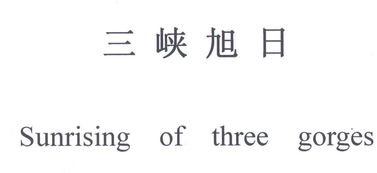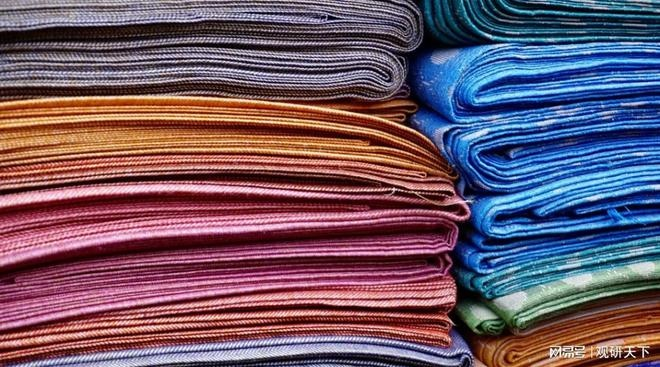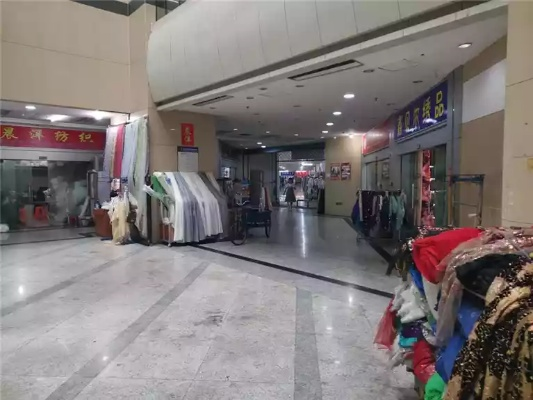The Significance of Eco-Textiles in Our Lives
Eco-Textiles, as a new type of textile product, have gradually become an important part of our life. They are made from natural materials such as plant fibers, animal hair, and minerals, and their production process is environmentally friendly. Eco-Textiles can be used in various fields, including clothing, home furnishings, and even medical equipment. In addition to being environmentally friendly, they also have many other benefits. For example, they are softer and more comfortable than traditional synthetic fabrics, and they do not cause allergies or irritation. Eco-Textiles are also more sustainable, as they require less energy and water to produce than traditional textiles. As the demand for eco-friendly products continues to grow, it is clear that eco-textiles will play an increasingly important role in our lives.
Introduction: In the modern world, sustainability has become a crucial aspect of our lives. As consumers, we are increasingly aware of the environmental impact of our daily activities, and this awareness is driving us towards more eco-friendly choices. One such area where we can make a significant impact is in the textile industry. Eco-textiles, or textiles made from sustainable materials, have emerged as a solution to the pressing environmental issues faced by our planet. In this essay, we will explore the importance of eco-textiles and how they contribute to our well-being and the health of our environment.
Eco-Textiles: What Are They? Eco-textiles refer to textiles that are produced using materials that are renewable, biodegradable, and/or have minimal negative environmental impact. These materials include organic cotton, bamboo, hemp, recycled polyester, and Tencel. By choosing eco-textiles, we are not only reducing our carbon footprint but also supporting local communities that produce these materials.
Benefits of Eco-Textiles:
-
Sustainable Production: Eco-textiles are produced using natural resources that do not harm the environment. This means that they require less water, energy, and other resources compared to traditional textiles. By choosing eco-textiles, we are contributing to the preservation of our natural resources for future generations.

-
Reduced Pollution: The production of traditional textiles often involves the use of harmful chemicals, such as pesticides and dyes. These chemicals can contaminate our soil, water, and air, leading to pollution and harming our ecosystem. Eco-textiles, on the other hand, do not contain these harmful chemicals, making them a safer alternative for our environment.
-
Enhanced Air Quality: Textile production can release harmful pollutants into the atmosphere, which can lead to respiratory problems and other health issues. By choosing eco-textiles, we can reduce our exposure to these pollutants and improve our air quality.
-
Support Local Economies: Many eco-textiles are produced locally, which means that they provide jobs and economic opportunities for local communities. This not only benefits the people who work in these industries but also helps to promote sustainable development in rural areas.
-
Improved Product Durability: Eco-textiles are designed to be durable and long-lasting, which reduces the need for frequent replacements and decreases waste generation. This not only saves money but also reduces the environmental impact associated with disposable products.
Case Study: Tencel - A Renewable Material Revolutionizing the Fashion Industry Tencel is a type of wood pulp derived from eucalyptus trees that has been used to create eco-textiles for decades. However, in recent years, Tencel has taken center stage as a revolutionary material that is both sustainable and fashionable. Tencel is made from renewable resources, making it a greener alternative to traditional textiles. It is also biodegradable and does not release harmful chemicals during its lifecycle.
Tencel is used in various textile products, including clothing, bedding, and home decor. Its unique properties make it an attractive option for designers looking to create eco-friendly fashion pieces. For example, Tencel fabrics are breathable, soft, and lightweight, making them ideal for summer wear. Additionally, Tencel's moisture-wicking properties make it perfect for creating activewear that keeps you cool and comfortable all day long.
Conclusion: In conclusion, eco-textiles play a vital role in promoting sustainability in our lives. By choosing these materials, we can reduce our carbon footprint, protect our environment, and support local economies. The case study of Tencel shows that innovative materials like Tencel can revolutionize the fashion industry while still meeting the needs of consumers. As we continue to embrace eco-friendly practices, we can look forward to a brighter future where our planet is healthy and thriving.
生态纺织品的重要性
生态纺织品是指采用环保、可持续的材料和技术生产出来的纺织品,旨在保护环境、促进可持续发展,随着全球环境问题日益严重,生态纺织品越来越受到人们的关注和重视,以下是生态纺织品的意义和价值:
生态纺织品的意义

-
环保理念推广 生态纺织品强调环保、可持续的理念,有助于推广环保意识,促进绿色消费,通过使用生态纺织品,人们可以减少对环境的污染和破坏,保护地球家园。
-
资源节约与循环利用 生态纺织品采用环保、可持续的材料和技术,有助于节约资源、实现循环利用,通过减少浪费和减少一次性用品的使用,可以降低对自然资源的消耗,减少环境污染。
-
促进产业升级 生态纺织品的发展可以促进相关产业的升级和转型,随着人们对环保、健康、舒适等需求的不断提高,生态纺织品市场不断扩大,相关产业也得到了快速发展。
案例说明
以下是一个关于生态纺织品案例的说明:
生态纺织品案例展示
| 案例名称 | 材料来源 | 生产过程 | 环保效果 | 社会意义 |
|---|---|---|---|---|
| 绿色纤维生产商 | 可再生纤维 | 采用环保技术,减少废弃物排放 | 降低环境污染,提高资源利用率 | 推动绿色产业发展 |
| 婴儿衣物品牌 | 天然有机棉 | 采用环保染料和工艺,减少化学物质残留 | 保护婴儿健康,促进母婴健康消费 | 提高消费者环保意识,推动绿色消费潮流 |
生态纺织品的发展趋势与展望
-
发展趋势 随着人们对环保、健康、舒适等需求的不断提高,生态纺织品将会越来越受到人们的关注和重视,生态纺织品将会朝着更加环保、可持续、高效的方向发展,生态纺织品也将与数字化、智能化等技术相结合,提高生产效率和质量。
-
展望 生态纺织品将会成为一种新型的消费趋势,成为人们追求环保、健康、舒适生活的重要方式,生态纺织品也将成为推动产业升级和转型的重要力量,促进相关产业的发展和壮大。
生态纺织品是保护环境、促进可持续发展的重要手段,通过使用生态纺织品,人们可以减少对环境的污染和破坏,保护地球家园,生态纺织品的发展也可以促进相关产业的升级和转型,推动绿色产业的发展和壮大,我们应该积极推广生态纺织品的使用,为保护环境、促进可持续发展做出自己的贡献。
Articles related to the knowledge points of this article:
A Comprehensive Look into the Different Kinds of Fibre-Picking Devices
The Fabric of Growth:An Insight into Ningbos Textile Industry
The Essential Standards for Testing the Tenacity of Textile Materials



